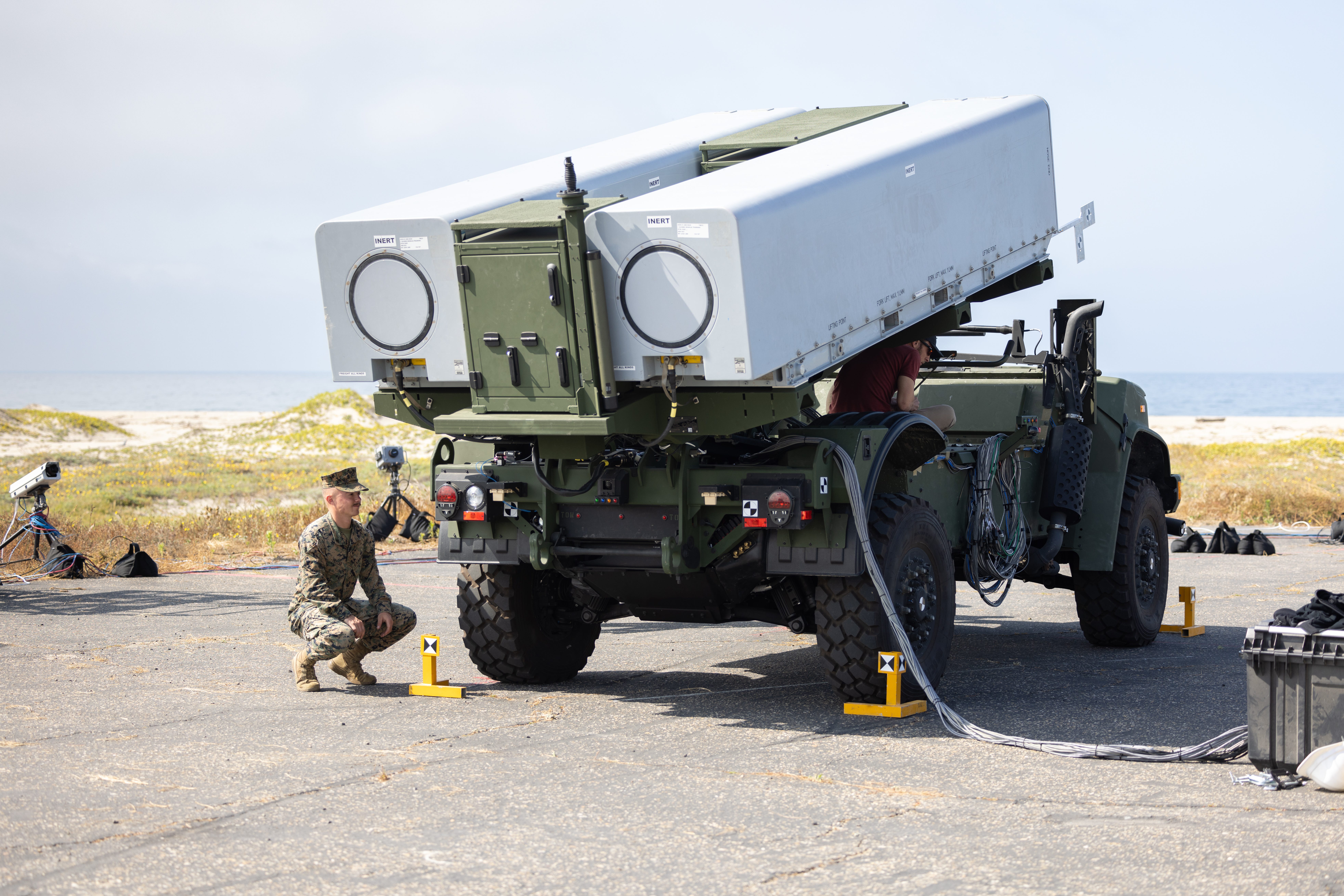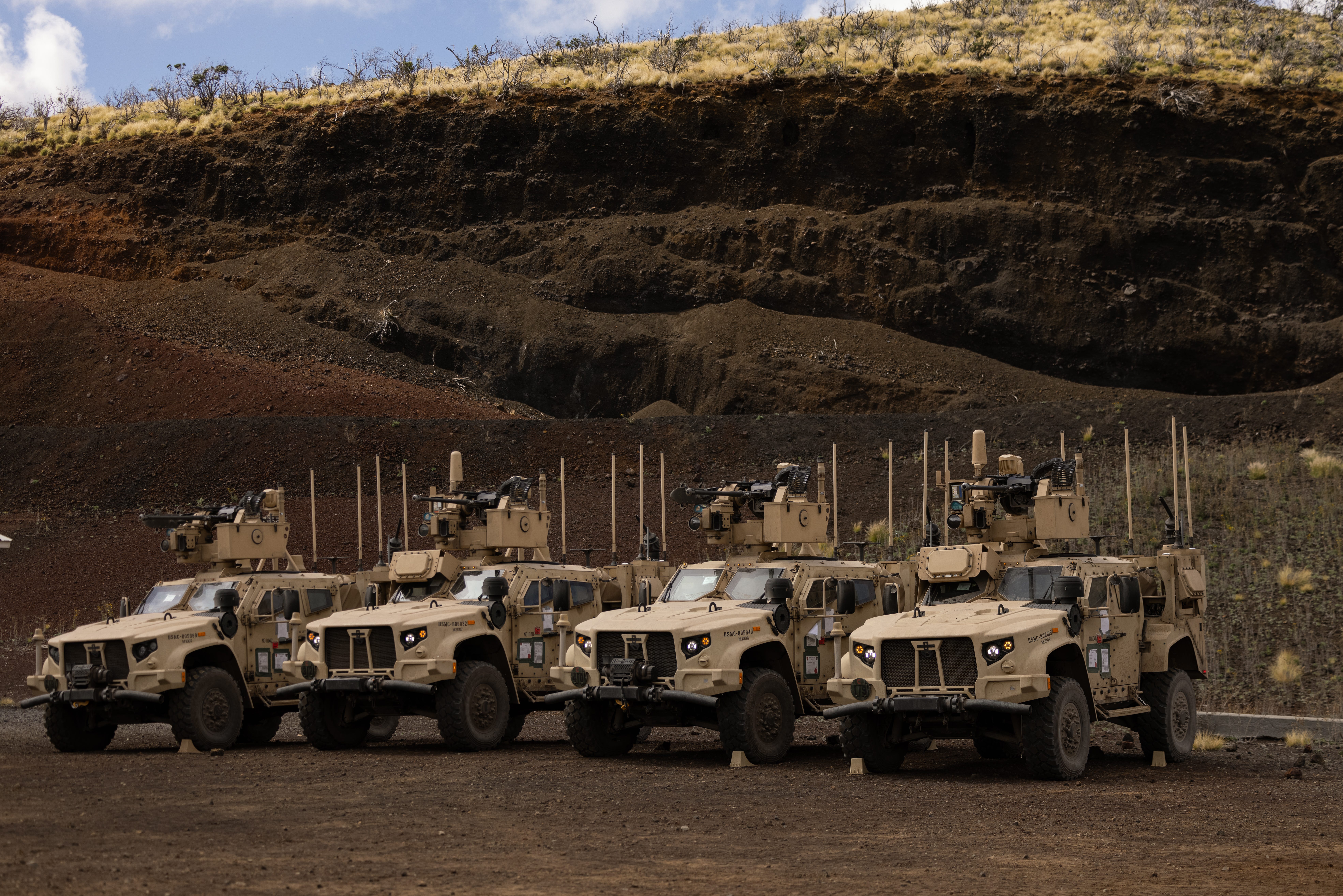
US Marine Corps photo by Sgt. Jacqueline C. Parsons
The US Marine Corps is deploying two new combat systems designed to counter key airborne and maritime threats to a strategic ally in the Western Pacific.
The Marines announced the deployment of the Navy-Marine Expeditionary Ship Interdiction System (NMESIS) and Marine Air Defense Integrated System (MADIS) last week.
The anti-ship and counter-drone systems will both be in the Philippines during the annual Balikatan exercise, which aims to strengthen joint US-Philippine operations.
Ship killers
NMESIS is a land-based anti-ship Naval Strike Missile launcher on a Joint Light Tactical Vehicle. First fielded late last year with the 3rd Marine Littoral Regiment, the weapon is designed to provide enhanced sea denial capability. Its involvement in Balikatan, the Marines said, was to strengthen deterrence and add to larger coastal defense strategies.

US Marine Corps photo by Cpl. Earik Barton
This marks its first deployment to the Philippines, which Col. John G. Lehane, the commanding officer of the 3rd Marine Littoral Regiment, called “a significant step in the right direction for the reaffirmation and strengthening of US-Philippine relations.”
During Balikatan, the NMESIS will participate in simulated fires exercises during Maritime Key Terrain Security Operations in Northern Luzon and the Batanes Islands, with several launchers transported to multiple islands in the Batanes chain.
The Batanes are located in the Luzon Strait between the Philippines and Taiwan. The waterways there connect the Philippine Sea and South China Sea. In previous Balikatan exercises, US and Philippine forces have practiced securing these islands as strategically important locations near Taiwan and mainland China.
Anti-ship capabilities are recognized as essential in a Pacific fight given the role that naval forces are expected to play. China, a top rival in the region, has the world’s largest navy. And it’s shipbuilding juggernaut is continuing to build more vessels.
Norwegian defense firm Kongsberg makes the Naval Strike Missile fired by NMESIS. Last November, it received a contract worth roughly $900 million from the Navy and Marines for the missile.
Drone killers
MADIS is a ground-based air defense system that like NMESIS is mounted on a JLTV. It will be involved in live-fire training, its second after a training event in Hawaii earlier this year. Marines with the 3rd Littoral Anti-Air Battalion of the 3rd Marine Littoral Regiment received the weapon last December.

US Marine Corps photo by Sgt. Jacqueline C. Parsons
Designed to target uncrewed aerial systems, or drones, “MADIS is a unique weapon system that enhances both the survivability and lethality of 3d MLR by extending the reach of the airspace over which the formation has control, and by giving tactical flexibility to the friendly elements operating within our area of operations,” Lehane said.
The 3rd Marine Littoral Regiment was established for combat operations in austere and distributed maritime environments; essentially, it was made for war in the Pacific.
When paired with NMESIS, MADIS helps increase the survivability of US and partner forces conducting maritime strikes by defending them from enemy drones and UAVs, Lehane said. During the exercise, the Philippine forces will also be conducting a demonstration of their counter-UAS systems.
The conflict in Ukraine and rapid technological development in this space has highlighted the importance of drones, as well as the capabilities to effectively counter them.
The deployment of both systems for Balikatan is an important element of ongoing security efforts between the US and the Philippines amid Chinese aggression in the region, particularly toward Philippine vessels operating in the South China Sea, as well as concerns of a potential Chinese invasion of Taiwan. These are often seen as potential flashpoints.
This year’s Balikatan marks the 40th iteration of the exercise, the largest bilateral training between Washington and Manila.
The post The Marines are deploying these new ship and drone killers to a strategic US ally in the Pacific appeared first on Business Insider.




